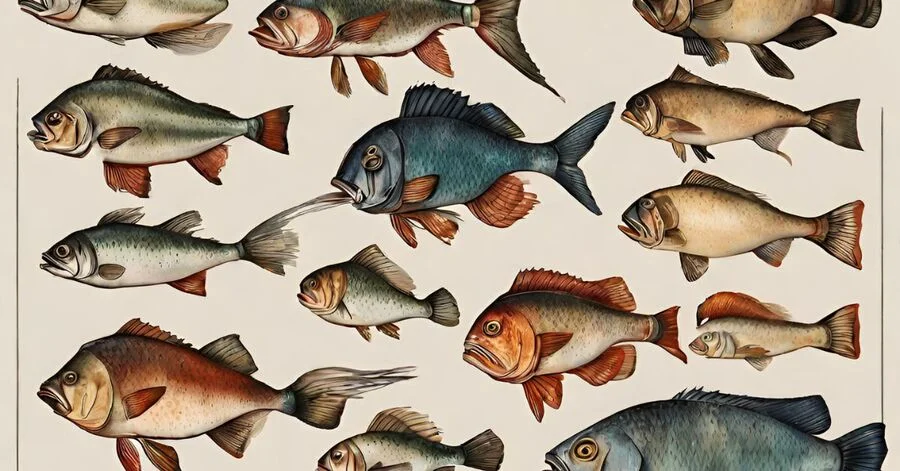Do you want to know which is the best fish to eat in India?
I was also confused.
But, now I’ve got the answer that I’m going to tell you.
Short Answer: The best fish to eat in India are Indian Salmon (Rawas), Rohu, Mackerel, Pink Perch, Hilsa, Surmai, Rawas, etc.
Which is the Best Fish to Eat in India?
So, now! Let’s find the best fish to eat in India:
| Best Fish to Eat in India | Latest Price (Rs./kg) |
| Indian Salmon (Rawas) | ₹250-300 |
| Rohu | ₹150-200 |
| Mackerel | ₹100-150 |
| Pink Perch | ₹200-250 |
| Hilsa | ₹400-500 |
| Surmai | ₹300-400 |
| Rawas | ₹250-300 |
| Pomfret | ₹300-400 |
| Katla | ₹150-200 |
| Paplet | ₹200-250 |
| Bangda | ₹100-150 |
| Singhara | ₹150-200 |
| Jhinga (Prawns & Shrimps) | ₹300-400 |
| Soorai/Kerai (Tuna Fish) | ₹200-250 |
| Bombay Duck | ₹100-150 |
| Kingfish | ₹300-400 |
| Pabda | ₹150-200 |
| Tilapia | ₹100-150 |
| Kurli | ₹100-150 |
| Basa | ₹150-200 |
1. Indian Salmon (Rawas)
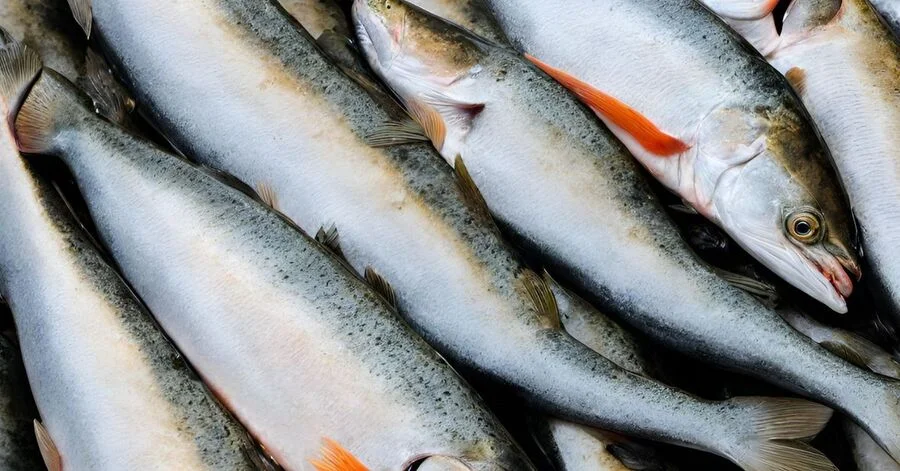
Indian Salmon (Rawas) is a type of fish that’s popular in India.
It’s known for its delicious taste and is widely consumed across the country.
1. Appearance: It typically has a silver-coloured body with a slightly darker back. Its body is streamlined, and it has a forked tail.
2. Size: They can grow to varying sizes, but typically they range from about 1 to 1.5 meters (3 to 5 feet) in length.
3. Diet: Indian Salmon are carnivorous, which means they primarily eat other smaller fish, and sometimes even insects.
4. Nutritional Value: Indian Salmon is a good source of protein, omega-3 fatty acids, vitamins, and minerals like vitamin D and selenium, which are important for overall health.
2. Rohu
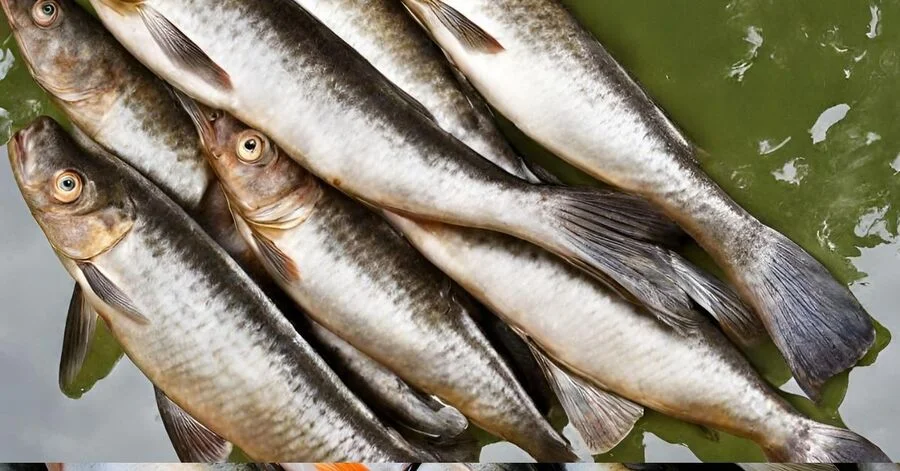
Rohu fish is a common freshwater fish found in rivers and lakes.
It’s popular for its taste and nutritional value.
1. Appearance: Rohu typically has a silver-colored body with a reddish tint on its fins. It has a slightly flattened head and a deeply forked tail.
2. Size: Rohu can grow to significant sizes, with adults reaching lengths of up to 1.2 meters (around 4 feet) and weights exceeding 20 kilograms (about 44 pounds).
3. Diet: Rohu is an omnivorous fish, meaning it eats both plant and animal matter. I
4. Nutritional Value: Rohu is rich in protein, essential amino acids, vitamins (such as vitamin D and vitamin B12), and minerals (including calcium, phosphorus, and iron), making it a nutritious food choice.
3. Mackerel
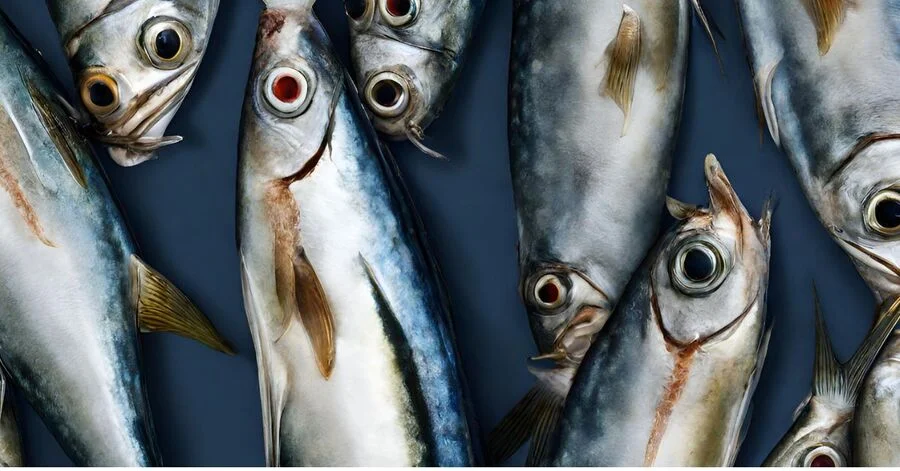
Mackerel fish is a type of fish. It’s small, oily, and tasty.
People eat it because it’s healthy and delicious.
1. Appearance: Mackerels typically have torpedo-shaped bodies with iridescent blue-green backs, silver underbellies, and vertical stripes along their sides. They have pointed snouts and deeply forked tails.
2. Size: Mackerel vary in size depending on the species, but are most commonly caught about 30 to 50 centimeters (12 to 20 inches) in length.
3. Diet: Mackerel are carnivorous predators that primarily feed on small fish, crustaceans, and plankton.
4. Nutritional Value: Mackerel is a rich source of omega-3 fatty acids, which are beneficial for heart health and brain function. It also contains high levels of protein, vitamins (such as vitamin D and B12), and minerals (including selenium and phosphorus).
4. Pink Perch
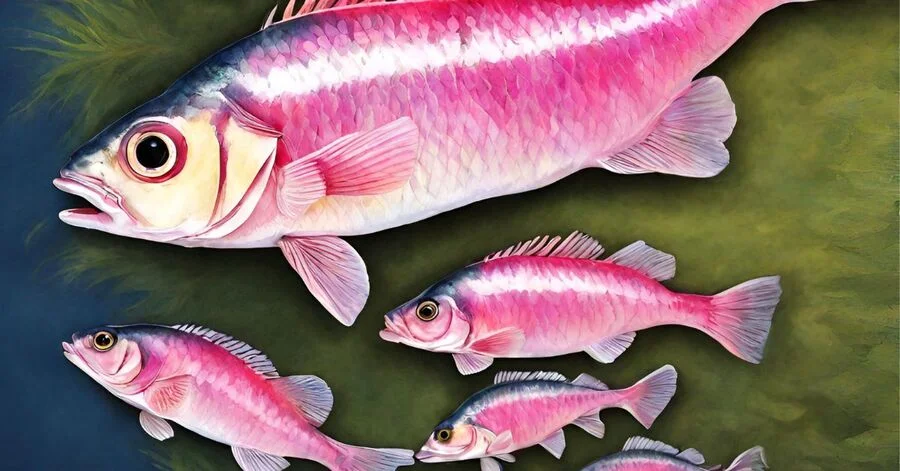
Pink Perch (Pink Tilapia) is a freshwater fish species that is popular in aquaculture and cuisine.
1. Appearance: Pink Perch typically has a pinkish-silver body with hints of iridescent hues. It has a streamlined shape with a slightly compressed body and a pointed snout.
2. Size: Pink Perch can grow to different sizes depending on factors like habitat and food availability, but they typically reach lengths of around 20 to 30 centimeters (8 to 12 inches).
3. Diet: Pink Perch are omnivorous, meaning they eat both plant and animal matter. Their diet includes aquatic plants, insects, and small fish.
4. Nutritional Value: Pink Perch is a good source of protein, low in fat, and rich in essential nutrients such as vitamins (including vitamin B12 and niacin) and minerals (like selenium and phosphorus).
5. Hilsa

Hilsa (Ilish) is a highly prized fish in South Asia, particularly in Bangladesh and parts of India.
1. Appearance: Hilsa has a slender, elongated body with a silvery color and a bluish-green hue on its back. It has a distinctive single dorsal fin and a deeply forked tail.
2. Size: Hilsa can vary in size, but adults typically range from about 30 to 40 centimeters (12 to 16 inches) in length.
3. Nutritional Value: Hilsa is rich in omega-3 fatty acids, protein, vitamins (such as vitamin A, D, and B12), and minerals (including calcium, phosphorus, and iron), making it a nutritious food choice.
6. Surmai
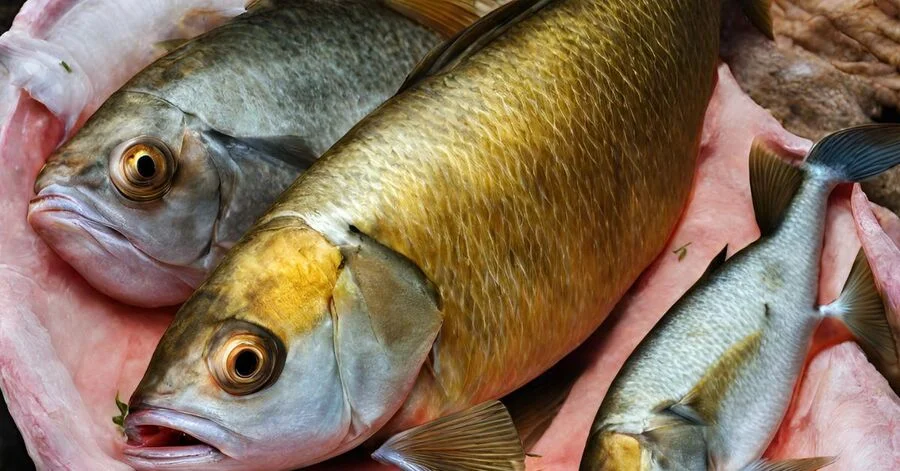
Surmai is a popular fish known in India, especially in coastal regions.
In English, it is called “Kingfish” or “Indian King Mackerel.”
1. Appearance: Surmai has a streamlined, elongated body with a silvery coloration and distinct horizontal stripes along its sides.
2. Size: Surmai can grow to significant sizes, with adults reaching lengths of up to 1.5 meters (around 5 feet) and weights exceeding 40 kilograms (about 88 pounds).
3. Diet: Surmai is a carnivorous predator, feeding on a variety of smaller fish, crustaceans, and squid.
4. Nutritional Value: Surmai is rich in protein, omega-3 fatty acids, vitamins (such as vitamin D and B12), and minerals (including selenium and phosphorus), making it a nutritious food choice.
7. Rawas

Rawas is a popular fish in India, also known as Indian Salmon.
1. Appearance: Rawas typically has a silver-colored body with a slightly darker back. It has a streamlined shape with a forked tail and is known for its sleek appearance.
2. Size: Rawas can vary in size, but adults typically reach lengths of about 1 to 1.5 meters (3 to 5 feet).
3. Diet: Rawas is a carnivorous fish, feeding on smaller fish, and other marine organisms.
4. Nutritional Value: Rawas is a good source of protein, omega-3 fatty acids, vitamins (such as vitamin D and B12), and minerals (including selenium and phosphorus), making it a nutritious food choice.
8. Pomfret

Pomfret is popular in various cuisines around the world, especially in South Asia.
1. Appearance: Pomfret typically has a flat, round body with a distinctive shape. Black Pomfret is dark-colored, while Silver Pomfret is silver in color. They have smooth, shiny skin and a forked tail.
2. Size: Pomfret vary in size depending on the species. They can range from small to medium-sized fish, with lengths typically between 30 to 60 centimeters (12 to 24 inches).
3. Diet: Pomfret are carnivorous fish, feeding on small fish, and other marine organisms.
4. Nutritional Value: Pomfret is a good source of protein, omega-3 fatty acids, vitamins (such as vitamin D and B12), and minerals (including selenium and phosphorus), making it a nutritious food choice.
9. Katla
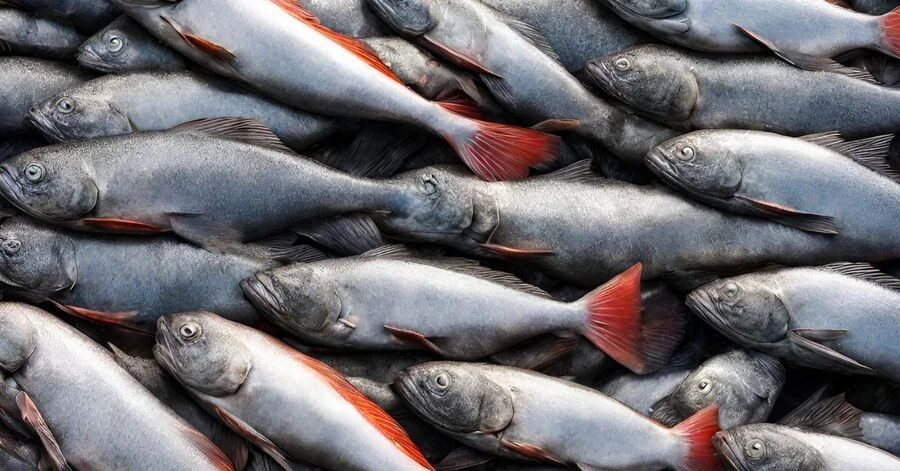
Katla is a freshwater fish species native to South Asia, particularly found in rivers and lakes across the Indian subcontinent.
1. Appearance: Katla typically has a deep, elongated body with silver-colored scales and a slightly protruding mouth. It has a forked tail and a dorsal fin with serrated edges.
2. Size: Katla can grow to significant sizes, with adults reaching lengths of up to 1 meter (around 3 feet) and weights exceeding 30 kilograms (about 66 pounds).
3. Nutritional Value: Katla is a good source of protein, essential amino acids, vitamins (such as vitamin B12 and niacin), and minerals (including calcium, phosphorus, and iron), making it a nutritious food choice.
10. Paplet
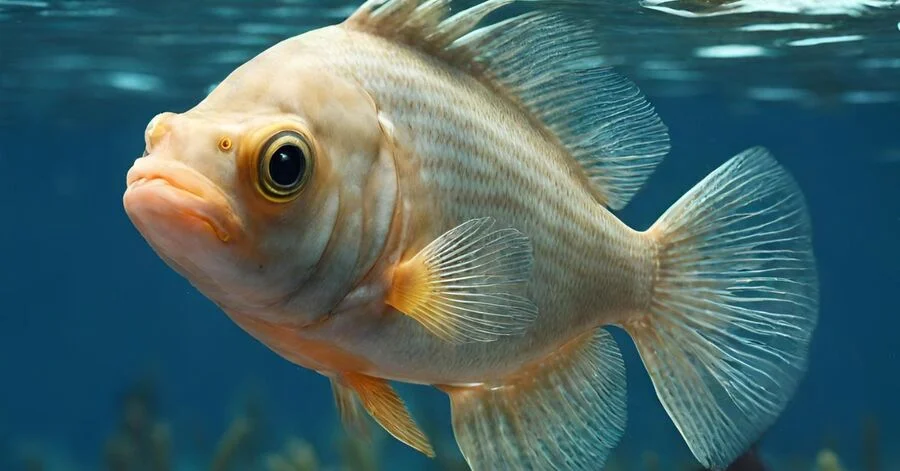
Paplet fish is a type of fish. It lives in water and people eat it because it tastes good.
1. Appearance: Paplet, or Black Pomfret, has a flat, round body with a distinctive shape. It is dark-colored, almost black, with smooth, shiny skin and a forked tail.
2. Size: Black Pomfret can vary in size, but adults typically range from about 30 to 60 centimeters (12 to 24 inches) in length.
3. Diet: Black Pomfret is a carnivorous fish, feeding on small fish, and other marine organisms.
4. Nutritional Value: Black Pomfret is a good source of protein, omega-3 fatty acids, vitamins (such as vitamin D and B12), and minerals (including selenium and phosphorus), making it a nutritious food choice.
11. Bangda

Bangda fish is long and shiny and found in oceans. It’s tasty and healthy. People cook it in many delicious ways.
1. Appearance: Bangda, or Indian Mackerel, has a silver-colored belly and iridescent blue-green back. It has vertical stripes along its sides and a forked tail.
2. Size: Bangda, or Indian Mackerel, can vary in size, but adults typically range from about 20 to 35 centimeters (8 to 14 inches) in length.
3. Diet: Indian Mackerel is a carnivorous fish, feeding on small fish, and plankton.
4. Nutritional Value: Indian Mackerel is a good source of protein, omega-3 fatty acids, vitamins (such as vitamin D and B12), and minerals (including selenium and phosphorus), making it a nutritious food choice.
12. Singhara

Singhara fish is small, lives in freshwater, and is delicious to eat. It swims fast and has shiny scales.
1. Appearance: Singhara fish bodies are covered with smooth, scaleless skin. They have barbels around their mouths, which resemble cat whiskers. These barbels help them navigate and locate food in murky waters.
2. Diet: Catfish are omnivorous, meaning they eat both plant and animal matter.
3. Nutritional Value: Catfish is a good source of protein, omega-3 fatty acids, vitamins (such as vitamin D and B12), and minerals (including selenium and phosphorus), making it a nutritious food choice.
13. Jhinga

Jhinga fish is a type of shrimp. It’s small, with a curved body and long antennas, often used in cooking.
1. Size: Both prawns and shrimps vary in size depending on the species. Some species are small and can fit in the palm of your hand, while others can grow several inches in length.
2. Nutritional Value: Prawns and shrimp are low in fat and calories but high in protein. They are also a good source of omega-3 fatty acids, vitamins (such as vitamin D and B12), and minerals (including selenium and iodine).
14. Soorai/Kerai (Tuna fish)
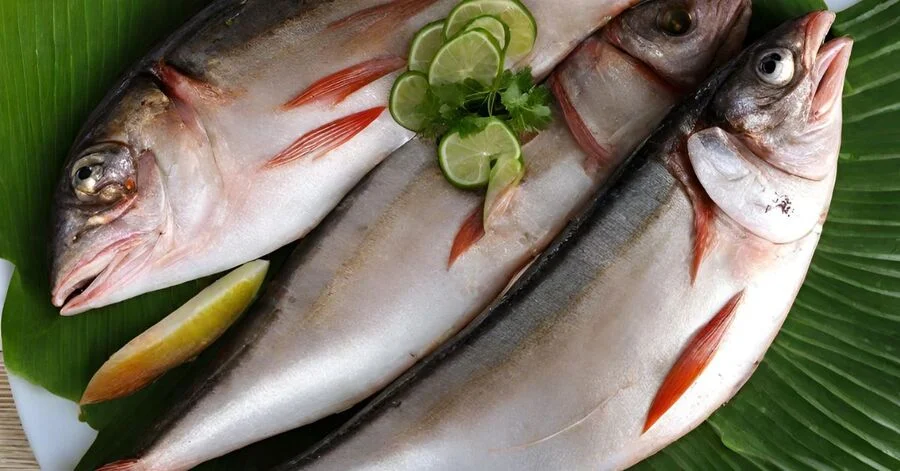
Soorai fish is a type of fish found in rivers. It’s small, shiny, and often used in cooking for its taste.
1. Appearance: Soorai fish has a torpedo-shaped body with a metallic blue to dark purple coloration on the back and silver-white on the belly. They have a series of finlets between the second dorsal fin and the tail.
2. Size: Soorai fish vary in size, but many can grow to significant lengths and weights. Yellowfin Tuna, for example, can reach lengths of up to 2.4 meters (8 feet) and weigh 200 kilograms (440 pounds).
3. Nutritional Value: Soorai fish is a rich source of protein, omega-3 fatty acids, vitamins (such as vitamin D and B12), and minerals (including selenium and magnesium), making it a nutritious food choice.
15. Bombay Duck
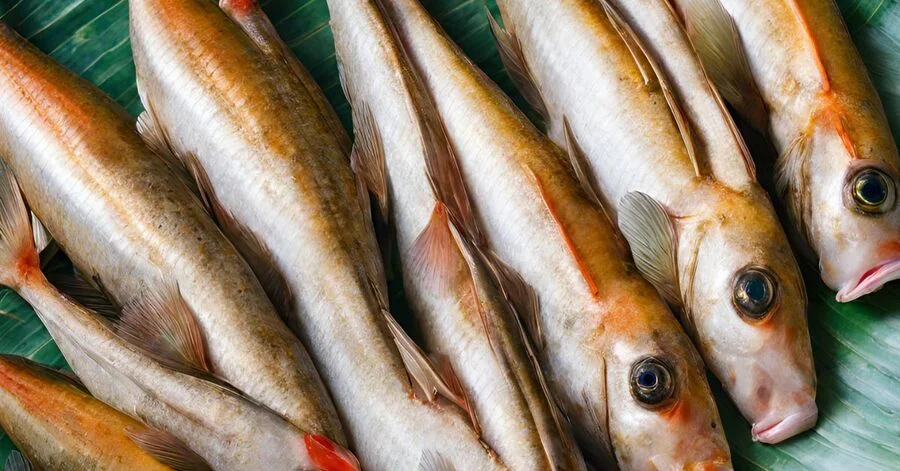
Bombay Duck is a popular fish in India, known for its unique taste and aroma.
1. Appearance: Bombay Duck has a tapered tail with scaleless skin and a pointed head with a large mouth. The coloration of Bombay Duck can vary from light brown to pinkish-gray.
2. Size: Bombay Duck can vary in size, but adults typically range from about 15 to 30 centimeters (6 to 12 inches) in length.
3. Diet: Bombay Duck is a carnivorous fish, feeding on small fish, and other marine organisms.
4. Nutritional Value: Bombay Duck is a good source of protein and essential nutrients, including omega-3 fatty acids, vitamins (such as vitamin D and B12), and minerals (including calcium and phosphorus).
16. Kingfish
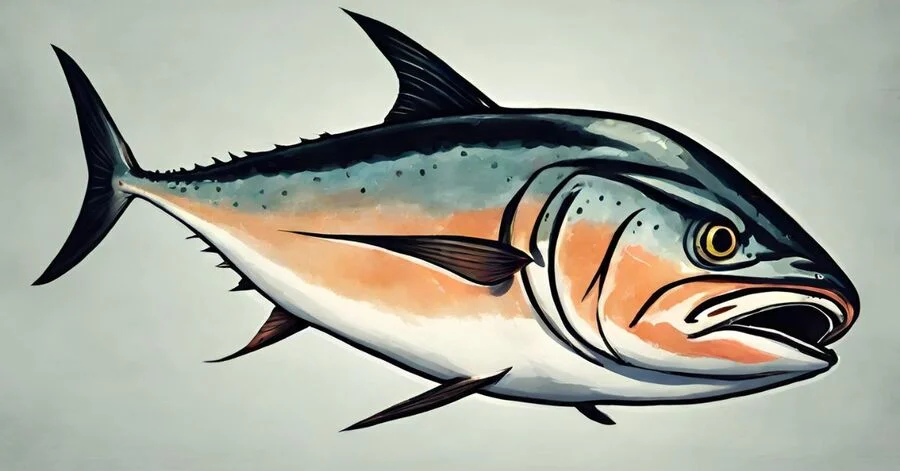
Kingfish is a big fish that lives in the sea. People catch it for food because it tastes delicious.
1. Size: Kingfish species vary in size, but many can grow to significant lengths and weights. Depending on the species, they can range from a few pounds to over 100 pounds in weight.
2. Diet: Kingfish are carnivorous predators, feeding on a variety of smaller fish, squid, and other marine organisms.
3. Nutritional Value: Kingfish is a good source of protein, omega-3 fatty acids, vitamins (such as vitamin D and B12), and minerals (including selenium and magnesium), making it a nutritious food choice.
17. Pabda
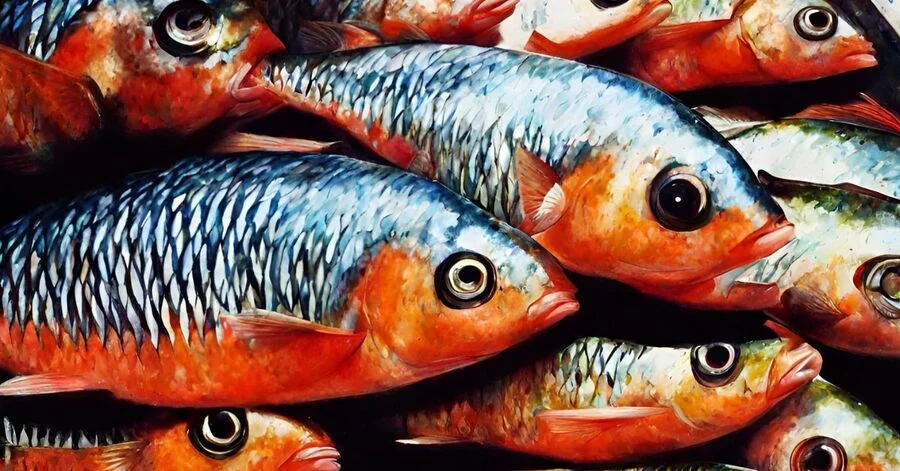
Pabda is a freshwater catfish species found in South Asia, particularly in rivers, lakes, and ponds across the Indian subcontinent.
1. Appearance: Pabda has a cylindrical body with a slightly flattened belly. It has smooth, scaleless skin and a pair of long barbels around its mouth. Pabda is typically grayish or brownish.
2. Size: Pabda varies in size, but adults typically range from about 10 to 20 centimeters (4 to 8 inches) in length.
3. Diet: Pabda is an omnivorous fish, feeding on various food sources including small fish, insects, and plant matter.
4. Nutritional Value: Pabda is a good source of protein, essential amino acids, vitamins (such as vitamin D and B12), and minerals (including selenium and phosphorus), making it a nutritious food choice.
18. Tilapia
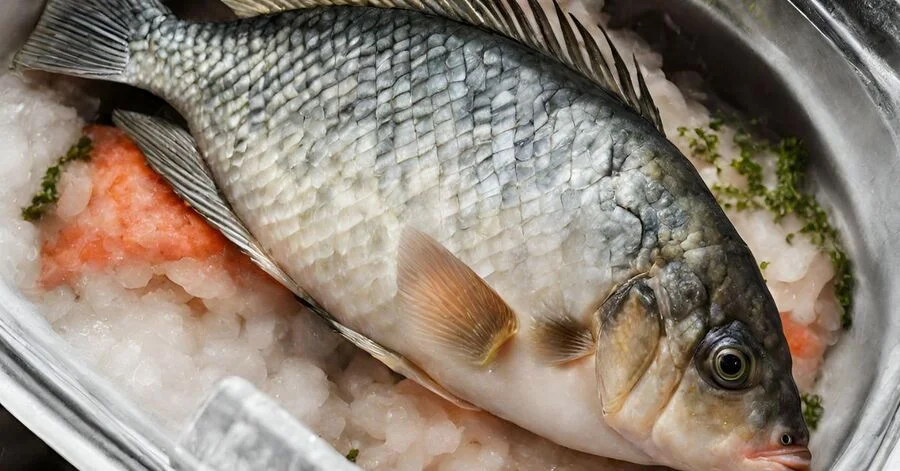
Tilapia is a popular freshwater fish that is widely consumed around the world.
1. Appearance: Tilapia typically has an oval-shaped body and varies in color, including shades of gray, brown, green, or red, depending on the species and environmental factors.
2. Size: Tilapia vary in size depending on the species and environmental factors. They can range from small to large, with some species reaching lengths of over 60 centimeters (about 24 inches).
3. Nutritional Value: Tilapia is a good source of protein, low in fat, and rich in essential nutrients such as vitamins (including vitamin B12 and niacin) and minerals (like selenium and phosphorus). It provides a nutritious and healthy food choice.
19. Kurli
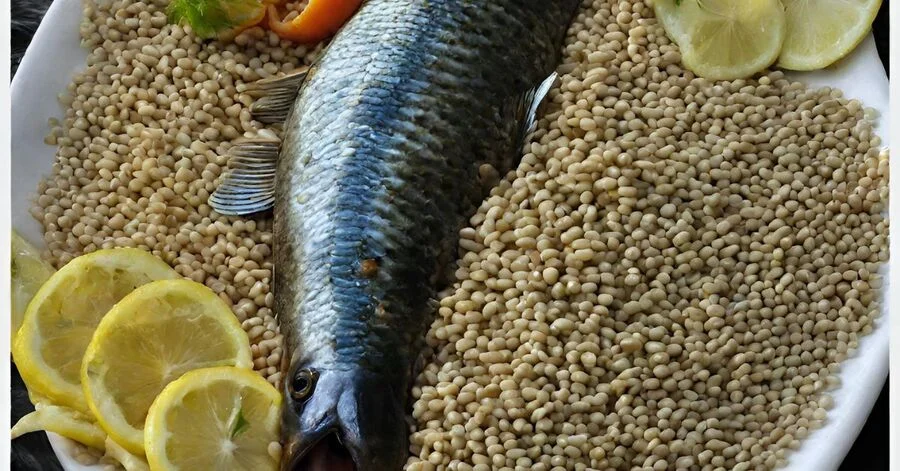
Kurli fish is a small, colorful fish found in freshwater. It has a round body and is popular in aquariums.
1. Appearance: Kurli fish typically have an elongated body and vary in color and markings depending on the species and environmental factors.
2. Diet: Kurli fish are omnivorous and feed on a variety of food sources, including aquatic plants, algae, and other fish.
3. Nutritional Value: Kurli fish provide a source of protein and essential nutrients, including vitamins and minerals, making them a nutritious food choice for local populations.
20. Basa
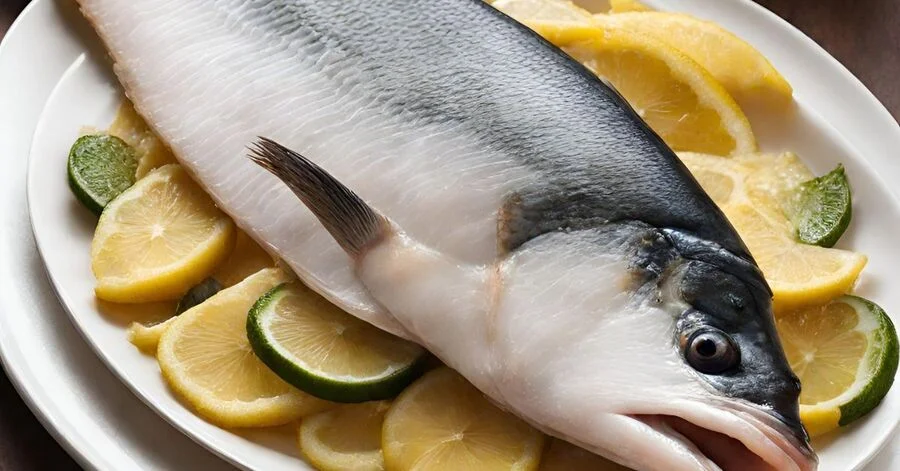
Basa is a type of freshwater fish that is native to Southeast Asia, particularly in the Mekong River basin.
1. Appearance: Basa has an elongated body with a flat, broad head and a long, rounded tail. It is typically silver-gray or white with smooth, scaleless skin.
2. Size: Basa can grow to significant sizes, with adults reaching lengths of up to 1 meter (around 3 feet) and weights exceeding 20 kilograms (about 44 pounds).
3. Diet: Basa is an omnivorous fish, feeding on various food sources including small fish, insects, and plant matter.
4. Nutritional Value: Basa is a good source of protein, low in fat, and rich in essential nutrients such as vitamins (including vitamin D and B12) and minerals (including selenium and phosphorus).
Best Fish to Eat in India Without Bones
The best fish to eat in India without bones are Basa, Tilapia, Pangasius, Pomfret, Seer fish, Katla, Rohu, Salmon, Kingfish, and Mackerel.
| Fish | Bone Structure | Taste | Average Price (per kg) |
| Basa | Boneless fillets | Mild, slightly sweet | Rs. 150-200 |
| Tilapia | Mostly boneless fillets | Mild, slightly sweet | Rs. 120-150 |
| Pangasius | Boneless fillets | Mild | Rs. 130-160 |
| Pomfret | Mostly boneless fillets, few small bones | Mild | Rs. 300-400 |
| Seer fish | Boneless fillets | Mild, slightly sweet | Rs. 400-500 |
| Catla | Fewer bones, mostly boneless fillets | Mild | Rs. 150-200 |
| Rohu | Fewer bones, mostly boneless fillets | Mild | Rs. 120-150 |
| Salmon | Boneless fillets | Rich, buttery | Rs. 800-1000 |
| Kingfish | Mostly boneless fillets | Mild | Rs. 500-600 |
| Mackerel | Fewer bones can be deboned easily | Rich, flavorful | Rs. 100-150 |
Which Indian Fish is Good for Health?
The Indian fish that is good for health is salmon. Mackerel, Sardines, Hilsa, and Pomfret.
| Fish | Health Benefits | Taste |
| Salmon | Rich in Omega-3 fatty acids, good for heart health | Rich, buttery |
| Mackerel | High in Omega-3 fatty acids, rich in vitamins and minerals | Rich, flavorful |
| Sardines | High in Omega-3 fatty acids, good source of protein | Rich, savory |
| Hilsa | High in Omega-3 fatty acids, rich in vitamins and minerals | Rich, savory |
| Pomfret | Low in fat, rich in protein and essential nutrients | Mild |
Bhetki Fish | Price, Benefits, & Nutrition
Mangur Fish (Mangur Machhali)
National Fish of India
Can Fish See Water?
Rohu or Katla Which Fish is Tasty in India?
FAQs
Which is the healthiest fish to eat in India?
Salmon is a healthy choice due to its high omega-3 content, beneficial for heart health. However, local options like mackerel and sardines are nutritious and sustainable choices too.
Which Indian fish tastes best?
Pomfret and Hilsa are popular for their taste. Pomfret has a mild, delicate flavor, while Hilsa is prized for its rich, oily taste.
Which Indian fish is good for liver?
Mackerel and sardines are rich in omega-3 fatty acids, beneficial for liver health. They help reduce inflammation and support overall liver function.
Which is the best boneless fish to eat in India?
Boneless options like Basa and Tilapia are popular for their mild flavor and easy preparation. They are widely available and versatile for various recipes.
top 10 best fish to eat in India
The top 10 best to eat in India:
1. Salmon: Rich in omega-3, good for heart health.
2. Mackerel: High in omega-3, beneficial for the brain and heart.
3. Sardines: Rich in nutrients, good for heart and bone health.
4. Pomfret: Mild flavor, versatile for cooking.
5. Hilsa: Prized for its rich, oily taste.
6. Rohu: Popular freshwater fish, versatile in Indian cooking.
7. Catla: Nutrient-rich freshwater fish, widely consumed.
8. Tilapia: Mild taste, boneless, suitable for various recipes.
9. Basa: Boneless, mild flavor, easy to cook.
10. Trout: High in protein, and omega-3, good for overall health.
Types of Fish in India to Eat
There are numerous delicious types of fish to eat in India, including tilapia, salmon, mackerel, and catfish.
Which is the tasty fish in India?
One of the tastiest fish in India is the Rohu, popularly used in various regional cuisines across the country.

I love animals & want to know more about different creatures & sharing their stories with everyone. From my childhood, I’ve been exploring forests & watching animals in their homes.
Now, I write about my adventures & all the amazing things I learned. My blogs are easy to understand & make you want to know more about animals. I teach about why animals are important & why we should take care of them.

